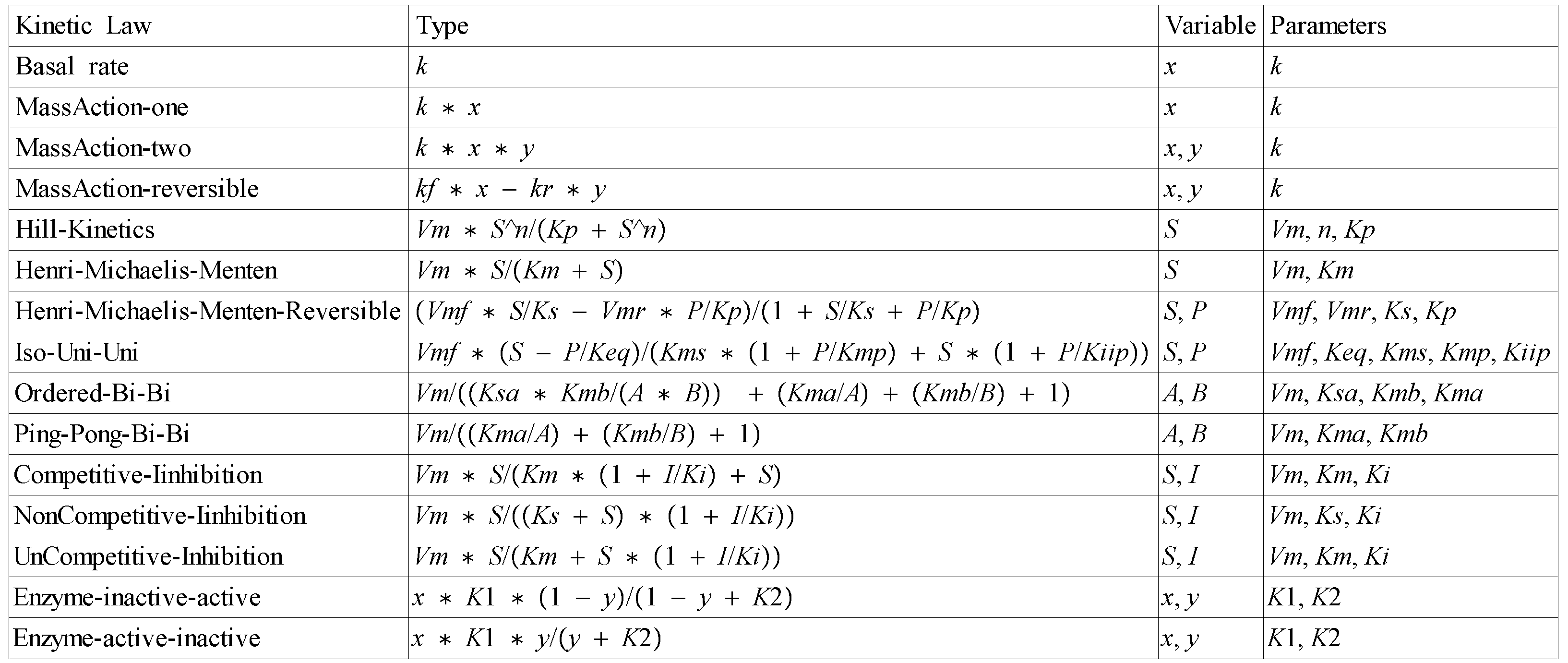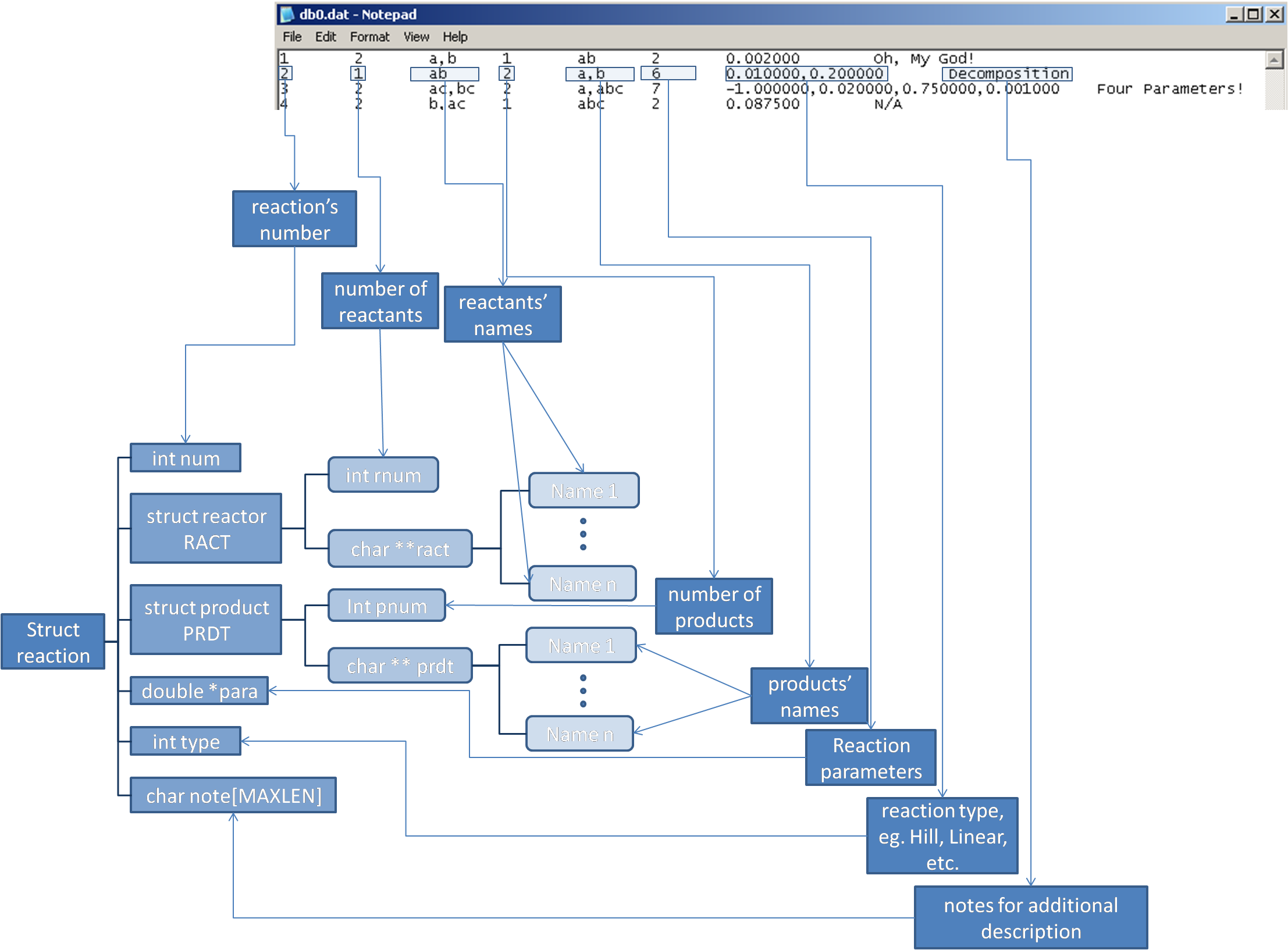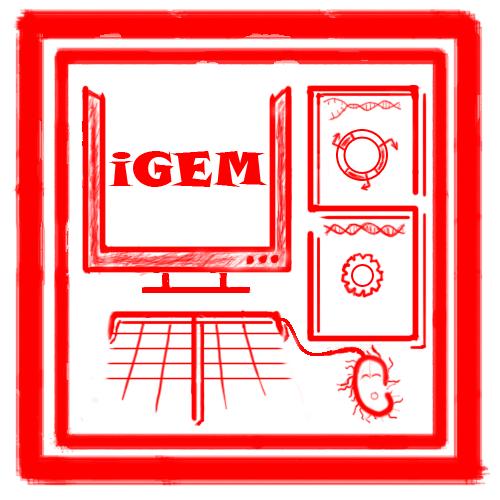Team:USTC Software/hoWDatabase
From 2009.igem.org
(New page: {{USTCSW_Heading}} {|- |{{USTCSW_SideBarL}} | ==Basic Description== The '''Database''' part is designated to build up the bridge combining the abstract parameters yielded by the '''Sys...) |
(→Abstract and approximation) |
||
| (7 intermediate revisions not shown) | |||
| Line 2: | Line 2: | ||
{|- | {|- | ||
| - | + | |valign = "top"| | |
| - | |{{USTCSW_SideBarL}} | + | {{USTCSW_SideBarL}} |
| | | | ||
| Line 19: | Line 19: | ||
==Abstract and approximation== | ==Abstract and approximation== | ||
| - | 1.All bio-chemical reactions on the genetic level are characterized in a finite set of reaction types, specifically as listed in [[ | + | 1.All bio-chemical reactions on the genetic level are characterized in a finite set of reaction types, specifically as listed in the following figure; |
| + | [[Image:Candidate_Kinetic_Law.png|center|500px|thumb]] | ||
2.Each term of the ODE can be mapped to part of a prototype of reactions (including all info from reactants and partial info from products);<br /> | 2.Each term of the ODE can be mapped to part of a prototype of reactions (including all info from reactants and partial info from products);<br /> | ||
3.Space-independent and Compartment-independent.<br /> | 3.Space-independent and Compartment-independent.<br /> | ||
| Line 46: | Line 47: | ||
==Visualization== | ==Visualization== | ||
| - | [[Image:database_ustcsw.png|center| | + | [[Image:database_ustcsw.png|center|500px|thumb|The organization of data structure and storage form.]]<br /> |
==Instructions== | ==Instructions== | ||
| Line 56: | Line 57: | ||
<br /> | <br /> | ||
| - | [[Image:ITinCP_database_ustcsw.png| | + | [[Image:ITinCP_database_ustcsw.png|center|580px|thumb|Independent test in console application]] |
==Outputs== | ==Outputs== | ||
| Line 70: | Line 71: | ||
4.If ordered itself, the database will be capable to offer higher searching efficiency;<br /> | 4.If ordered itself, the database will be capable to offer higher searching efficiency;<br /> | ||
| - | | | + | |valign = "top"| |
{{USTCSW_SideBarR}} | {{USTCSW_SideBarR}} | ||
| + | |} | ||
|} | |} | ||
{{USTCSW_Foot}} | {{USTCSW_Foot}} | ||
Latest revision as of 20:19, 20 October 2009
| About | Team and People | Project | Standard | Notebook | Demo | Safety | External Links |
|---|
|
|
Basic DescriptionThe Database part is designated to build up the bridge combining the abstract parameters yielded by the System Identification process and the concrete needs from users via SBML. Therefore, corresponding to its transitive role here, the inputs and outputs of this part is similarity characterized. The Functions1.Filter all matching reactions from the database via matching suitable parameters of all terms of the ODE array, provided by preceding GA and PSO part; Abstract and approximation1.All bio-chemical reactions on the genetic level are characterized in a finite set of reaction types, specifically as listed in the following figure; 2.Each term of the ODE can be mapped to part of a prototype of reactions (including all info from reactants and partial info from products); Data Structure and Organization
struct reactor{
int rnum;//number of reactants
char **ract;//names of reactants
};
struct product{
int pnum;//number of products
char **prdt;//names of products
};
struct reaction{
int num;//reaction number
struct reactor RACT;//info of reactants
struct product PRDT;//info of products
int type;//reaction type as listed in keneticlaw.pdf
double *para;//all parameters
char note[MAXLEN];//self-defined notes
};
VisualizationInstructions{
1.Input the tolerance of deviation of stored reactions from idea identified parameters in percentage (temporarily confined to 0% to 1000%); Outputsdbt0.dat, dbt1.dat …, dbt9.dat: all reactions contained in best ten models Defects1.Not ready for repeated searches at one traverse of the original database; |
|
 "
"































